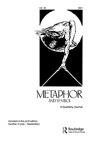“天哪,我的反讽探测器爆炸了!”在冠状病毒大流行期间发出讽刺
IF 3.3
3区 文学
0 LANGUAGE & LINGUISTICS
引用次数: 2
摘要
摘要2020年春季冠状病毒大流行期间的一个引人注目的事件是,人们在多大程度上对其他人的言论和行为,以及在某些情况下对自己的行为发出“讽刺”。这些频繁的呼喊证明了人们在认知上意识到了先前的期望和正在展开的现实之间的一些差异,但也揭示了人们在沟通中说服他人对那些应对讽刺负责的人采取负面看法的努力。本文探讨了在疫情期间,在言语讽刺和情景讽刺的背景下发出讽刺的几个例子。我的分析表明,什么是“讽刺”总是取决于做出这种判断的分析水平。从个人角度来看,讽刺可能是突出的,但从社会/文化角度来看,则不是讽刺,反之亦然。我们对一件事具有讽刺意味的感觉也可能随着时间的推移而改变。一些讽刺的呼声甚至聚焦于未来的“讽刺机会”,以应对不同的经济、环境和社会正义挑战。这些观察结果为反讽理论和研究提供了一些启示。本文章由计算机程序翻译,如有差异,请以英文原文为准。
“Holy Cow, My Irony Detector Just Exploded!” Calling Out Irony During The Coronavirus Pandemic
ABSTRACT One of the compelling events during the 2020 spring coronavirus pandemic is the extent to which people call-out “irony” in regard to the speech and actions of other individuals, as well as, in some cases, their own behaviors. These frequent call-outs are evidence of the cognitive realization of some discrepancy between prior expectations and unfolding reality, but also reveal people’s communicative efforts to persuade others to adopt a negative view of those individuals who are responsible for the irony. This article explores several examples of irony call-outs in the context of both verbal irony and situational irony in the midst of the pandemic. My analysis suggests that what is considered to be “irony” always depends on the level of analysis from which such judgments are made. Irony may be salient from a personal point of view but non-ironic from a social/cultural perspective, and vice-versa. Our sense that an event is ironic may also change over time. Some call-outs of irony even focus on future “ironic opportunities” that would address different economic, environmental, and social justice challenges. These observations suggest several implications for theory and research on irony.
求助全文
通过发布文献求助,成功后即可免费获取论文全文。
去求助
来源期刊

Metaphor and Symbol
Multiple-
CiteScore
2.90
自引率
0.00%
发文量
23
期刊介绍:
Metaphor and Symbol: A Quarterly Journal is an innovative, multidisciplinary journal dedicated to the study of metaphor and other figurative devices in language (e.g., metonymy, irony) and other expressive forms (e.g., gesture and bodily actions, artworks, music, multimodal media). The journal is interested in original, empirical, and theoretical research that incorporates psychological experimental studies, linguistic and corpus linguistic studies, cross-cultural/linguistic comparisons, computational modeling, philosophical analyzes, and literary/artistic interpretations. A common theme connecting published work in the journal is the examination of the interface of figurative language and expression with cognitive, bodily, and cultural experience; hence, the journal''s international editorial board is composed of scholars and experts in the fields of psychology, linguistics, philosophy, computer science, literature, and media studies.
 求助内容:
求助内容: 应助结果提醒方式:
应助结果提醒方式:


